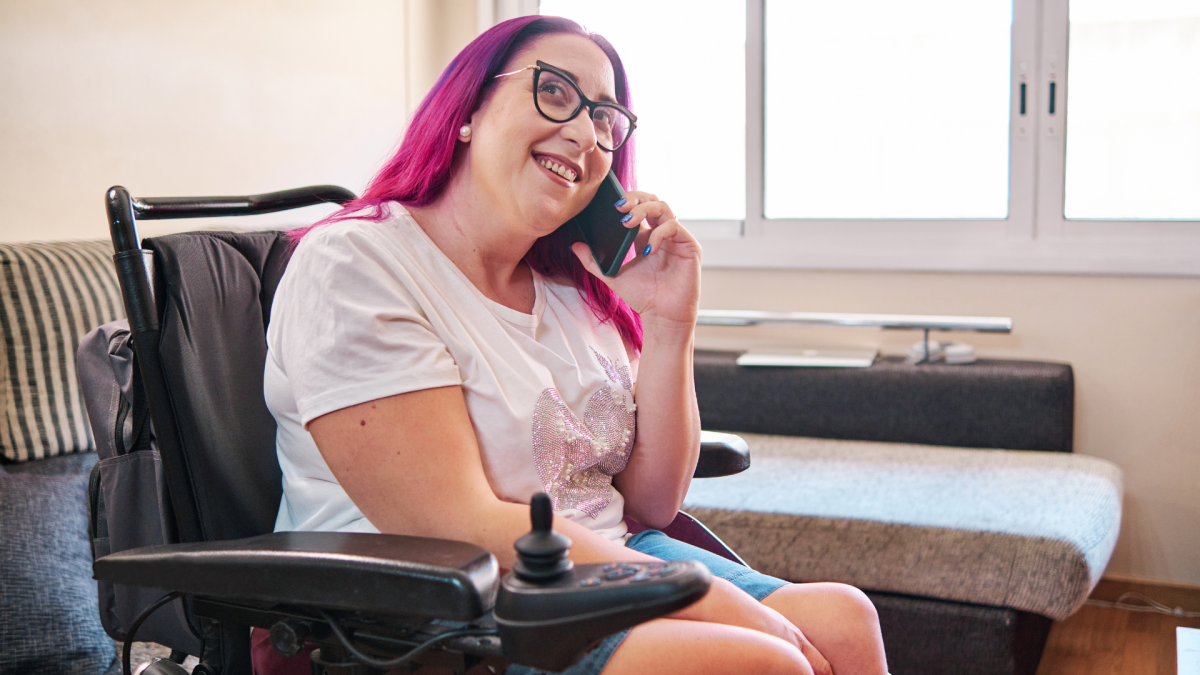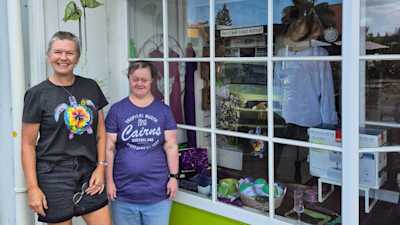Some people feel uncomfortable sharing information about their disability in the workplace. Here is how you can help to make sure that doesn’t happen.

Earlier this year, the Australian Institute of Health and Welfare reported that 93% of people who identify as having a disability and are unemployed face at least one difficulty when finding work. This is despite most (88%) employed working-age people with disability not requiring additional support from their employer to work.
People with disability experience more barriers to employment than people without – and one of the barriers commonly faced is feeling unsafe sharing information about their disability with an employer or potential employer.
The key reasons for this can be attributed to workplace culture, lack of representation in leadership, a lack of visibility of support options, and little to no flexibility in different ways of working.
Emily Reaper, Executive Officer of Client Services, highlights the negative impacts of employees feeling unsafe discussing their disability at work.
"I spent a lot of time hiding a large part of who I am at work because people couldn’t always ‘see’ my disability, and I didn’t feel safe to share it."
"The downside to this is that I was never truly myself in any workplace. I pushed myself outside my limits rather than asking for help, which meant I could not work to the best of my abilities." Said Emily Reaper.
We know that when people feel safe talking about their disability at work, they are more engaged, feel that they belong and are more confident and satisfied in their roles.
Here are four ways your organisation can create an environment where people with disability feel safe and supported.
Representation in leadership
Sometimes, people do not want to disclose having a disability because they fear it may impact their career goals. This is amplified when there is a lack of representation of people with disability in leadership.
While the introduction of inclusion policies has seen a rise in organisations welcoming people with disability into entry-level positions, this has not commonly been the case for senior leadership positions. Many leaders with disabilities have hidden their disability and its extent for as long as possible to secure their positions.
Representations of people with disability in leadership positions sends a clear message that people with disability are welcomed and valued in the organisation. Having a disability is not a barrier to employment or promotions.
"Reading about who was on the board was one of the first things I did when applying for my role at Life Without Barriers." Said Trelawney Holt, Digital and Social Media Communications Officer.
"It was a welcomed change to see people with disability represented on the board."
"From that moment, I felt confident that I wouldn't be at a disadvantage if I shared my disability." Said Trelawney.
Workplace flexibility
Thanks to COVID, more workplaces now have flexible work arrangements. However, it is essential to consider a person's mental and physical requirements and individualise the support provided.
The best way to start is to ask, 'What can we do to make the workplace comfortable for you?' or 'What adjustments or support can we provide to help you with your work?'
Including this in the interview, onboarding process, and during regular check-ins allows people to feel more comfortable discussing their ongoing needs and making adjustments as needed.
"From the day of my first interview with Life Without Barriers to when I was offered a job, I knew I had found an employer who saw me for my true value and not my disability." Dominic Freestone, Senior Graphic Designer.
"With the right workplace adjustments, I can do my job just as well as any non-disabled person."

Workplace culture
Creating a welcoming and supportive environment is not the responsibility of one person. It is something that must be seen in the attitudes and behaviour of every person across an organisation.
Workplace culture can be built to support people with disability by providing regular learning opportunities for employees to increase their disability confidence. This prevents discrimination by challenging unconscious bias and helping all employees to become educated about the barriers people with disability face in the workforce.
You can also establish employee groups where people with disability can connect with others for support and share resources and experiences in a safe, non-judgmental space. At Life Without Barriers, we have DAWN (Disability Accessibility Wellbeing Network).
As Emily Reaper and Dwayne Brumby, DAWN Co-Chairs, explain, "DAWN is led by a committee in which 80% of the members have a lived experience of disability. An employee-led network with strong integrated connections across all parts of the business, DAWN continues to meaningfully influence strategy and advance accessibility and inclusion outcomes for everyone."
DAWN serves as a network and resource for employees with disability and their allies. The goal is to create a great place to work for everyone by embracing the individual skills, perspectives, and experiences our people bring to the workplace. The network is open to all employees of Life Without Barriers.
Workplace culture is also built through a visible commitment to welcome and support people with disability in your organisation. This should be done by applying supportive measures consistently. You can also demonstrate this through communication channels such as your website, social media and internal communications.

Clear policies, procedures and plans
For people with disability to trust you as an employer and feel secure in disclosing their disability, clear policies, procedures and plans should be documented and easily accessible.
Including supportive measures and commitment actions in official organisation documentation provides transparency, ensures all staff are aware of their obligations, and that people with disability have a clear roadmap for accessing support.
Fundamentally, however, it allows people with disability to know their rights will be met and respected in your organisation.
"Documentation should be explicitly inclusive of people with disability. Don’t assume people with disability will ‘read themselves in’ to your policies if they are not mentioned overtly. People from marginalised communities are more likely to ‘read themselves out'." Said Ashleigh Sternes, Diversity and Inclusion Lead.
"Be bold and unambiguous in your support for people with disability."

At Life Without Barriers, our doors are always open to people with disability. We are proud to be an accredited Disability Confident Recruiter through the Australian Network on Disability (AND). This means we are unequivocally committed to ensuring our recruitment and selection processes are accessible to people with disability. We actively support people being comfortable discussing their disability with us and we encourage all employers to do the same.
“Life Without Barriers has not only ‘talked the talk’ but we also ‘walk the walk’ when it comes to actively supporting our employees with disabilities." Said Dwayne Brumby, Assistant Financial Accountant.
You can learn more about our commitment to people with disability here.
Life Without Barriers also endorses the Department of Social Services Employ My Ability campaign, which provides a guiding framework for governments, employers and the broader community to increase employment outcomes for people with disability.


